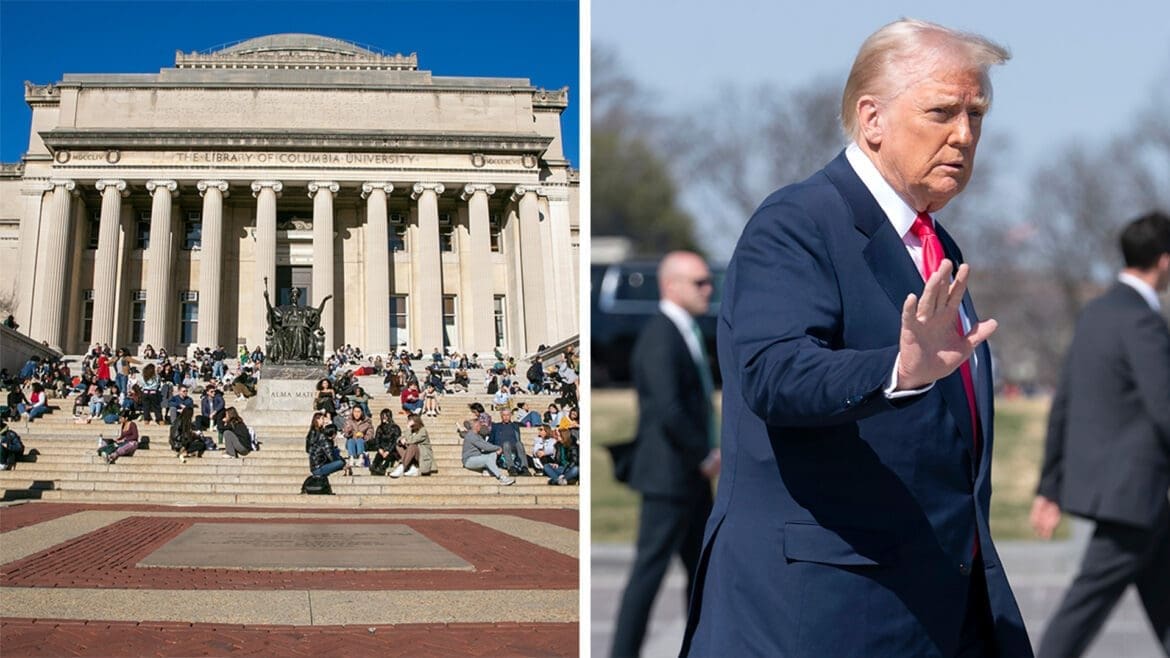In recent developments, former President Donald Trump has intensified his focus on higher education funding, proposing significant changes that have sparked both support and controversy. Central to his agenda is the dismantling of the Department of Education and the enforcement of policies that align university funding with conservative principles.
Dismantling the Department of Education
On March 20, 2025, President Trump signed an executive order directing the dismantling of the U.S. Department of Education. This move aims to transfer control of education back to individual states, fulfilling a longstanding conservative objective. Trump criticized the department as wasteful and inefficient, asserting that states are better positioned to manage educational systems. While the complete elimination of the department requires congressional approval, the executive order initiates the process by reducing its functions and workforce.
Linda McMahon, co-founder of World Wrestling Entertainment and a longtime Trump ally, has been appointed as the Secretary of Education with the primary task of overseeing the department’s dismantling. McMahon’s nomination underscores the administration’s commitment to restructuring federal involvement in education.
Impact on Universities and Federal Funding
The administration’s actions have had immediate repercussions for universities nationwide. Columbia University, for instance, faced the revocation of approximately $400 million in federal grants and contracts due to alleged noncompliance with anti-discrimination laws, specifically concerning incidents of antisemitism on campus. The administration demanded significant changes, including placing certain academic departments under receivership and altering admissions policies. This move has raised concerns about academic freedom and the potential for federal overreach into university governance.
Similarly, the University of Pennsylvania experienced a suspension of $175 million in federal funding over its policies regarding transgender athletes. The administration cited the university’s inclusive policies as conflicting with federal directives, highlighting the contentious national debate over transgender participation in sports. This action underscores the administration’s willingness to leverage federal funding to influence university policies on social issues.
Broader Consequences for Higher Education
The administration’s aggressive stance has led to widespread uncertainty across higher education institutions. Many universities are implementing hiring freezes, reducing graduate admissions, and reassessing programs to align with the new federal directives. For example, the University of California system announced a hiring freeze in response to potential funding cuts and anti-diversity, equity, and inclusion (DEI) efforts. These measures have raised alarms about the future of academic research, diversity initiatives, and the overall quality of education.
Critics argue that these actions could have long-term detrimental effects on the nation’s research infrastructure and its ability to address public health challenges. The potential reduction in trained professionals and the undermining of societal progress are among the concerns voiced by educational leaders.
Political and Social Implications
The administration’s policies reflect a broader effort to reshape higher education to align with conservative values. This includes promoting “patriotic education,” opposing critical race theory, and limiting diversity programs. While supporters believe these measures are necessary to counteract perceived liberal biases in academia, opponents view them as threats to academic freedom and inclusivity.
The situation at Columbia University serves as a focal point in this national debate. The administration’s demands for changes in university governance and policy have been met with resistance from faculty and academic associations, who see them as infringements on institutional autonomy. The outcome of this standoff could set a precedent for federal intervention in higher education.
Conclusion
President Trump’s recent actions concerning education funding and university governance represent a significant shift in federal education policy. By dismantling the Department of Education and tying federal funding to compliance with specific ideological standards, the administration is redefining the relationship between the federal government and higher education institutions. As universities navigate these changes, the balance between state control, academic freedom, and federal oversight remains a contentious and evolving issue.






